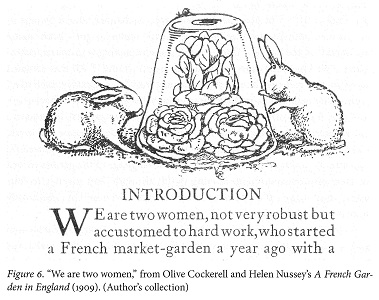
The New Woman movement grew out of the Arts and Crafts movement in Britain in the late 19th and early 20th centuries. Its aim was to give women new opportunities, especially to do paid work, outside their role of nurturing mother at the hearth.
New Woman Ecologies shows how the New Woman and the growing green efforts meshed with each other.
Each chapter presents a different episode in this meshing, using mainly texts written at the time. Carroll moves from two London women starting their own market garden in rural Kent through to women’s participation in the Land Army, a government-run farm work project during World War I.
The final chapter focuses on the revival of herb growing after World War I. Maud Grieve’s
Modern Herbal of 1931 is one text among those which “transformed public perception of local herbs from ‘almost inert’ weeds to potent partners in both domestic and commercial gardens” (p.152). Grieve’s plant entries include medicinal as well as the usual plant and growing information. She also notes connections between plants and other living things, notably people. Her long entry on English lavender asserts its superiority to French lavender not only due to its medicinal qualities but also because it is local and therefore fresher. She also notes its positive effect on the grower. In England the herbal revival was scotched in 1941 by the Pharmacy and Medicines Act, which grew out of fear that giving medicinal information on plants to the masses was dangerous, particularly to pharmacists. The act described the use of herbs as medicine as fairy tale thinking. Its largely successful goal was to put herb growers, who were mainly women, out of business. The act was repealed in 1968.
All the efforts described in New Woman Ecologies were frustrated in one way or another, but the reader gains helpful background information on one corner of the history of the feminist and ecological movements.